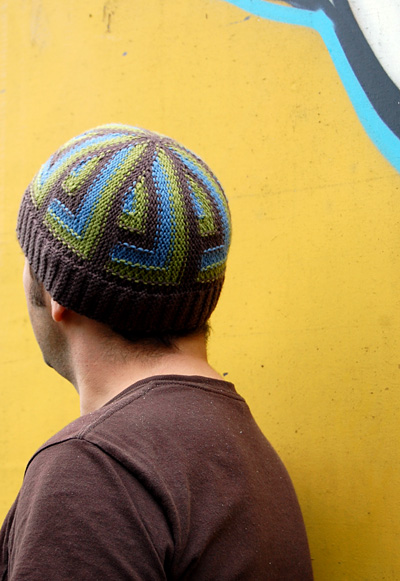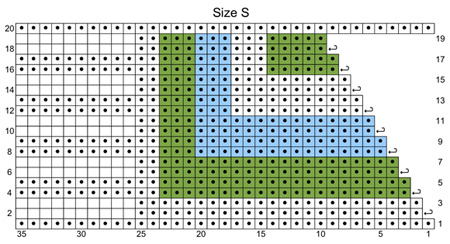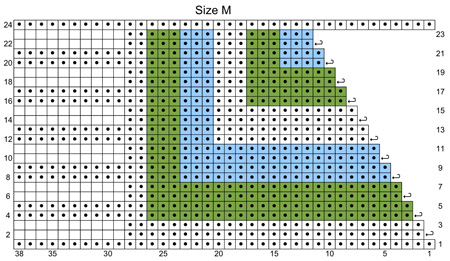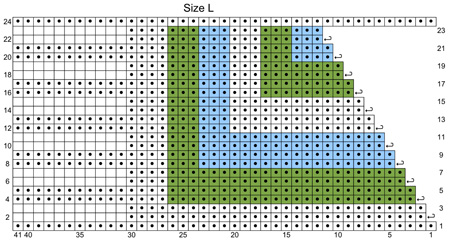 
Directions for the crochet
cast on method used for
this project can be found here.
Instructions for grafting can be found here.
Wrap & turn: Bring yarn between needles to front
of work, slip next stitch to right needle, bring yarn
around this stitch to back of work, slip stitch back
to left needle, turn work to begin purling back in the
other direction.
This hat is designed in reverse stockinette st, so that
the 'purl side' of the fabric faces out. If you decided
you prefer the stockinette st side of the fabric, the
short row wraps will be picked up differently.
Short row wraps are picked up on the last row of each
panel – a WS row, which is a knit row. If you plan
to use the reverse stockinette st face of the fabric
as the RS, when you come to a wrapped st, pick up the
wrap by inserting the tip of the left needle into the
back of the wrap and knitting it together with the st.
The wrap will show on the stockinette st face of the
fabric.
If you plan to use the
stockinette st face of the fabric as the RS, when you
come to a wrapped st, slip the st to the right needle,
insert the tip of the left needle into both the front
of wrap and the st, slipping it back to the left needle;
knit the wrap and stitch together. The wrap will show
on the reverse stockinette st face of the fabric.
 Intarsia: Intarsia:
This pattern involves the Intarsia method of color work. When working in
this way, different sections of each row are worked with different colors.
Use a separate length of yarn for each area of color.
When switching from one color to the next within each row, drop the color
you have been knitting with, and bring the yarn for the next color up under
the yarn of the previous color before you continue knitting. This will
twist the 2 yarns around each other. It is very important to do this; if
you do not wrap the yarns in this way, the areas of color will not be joined,
and you will have holes in your work.
To make economical use of the yarn, I used both ends
of the ball for each chart repeat. This may seem like
a messy idea, and the yarns did get a little tangled,
but at the end of each panel all yarn tails are cut except
one strand of MC (which is needed for ending and starting
each panel), which keeps the tangle from getting out
of control. If you prefer, each ball of yarn can be divided
into two smaller balls.



|

